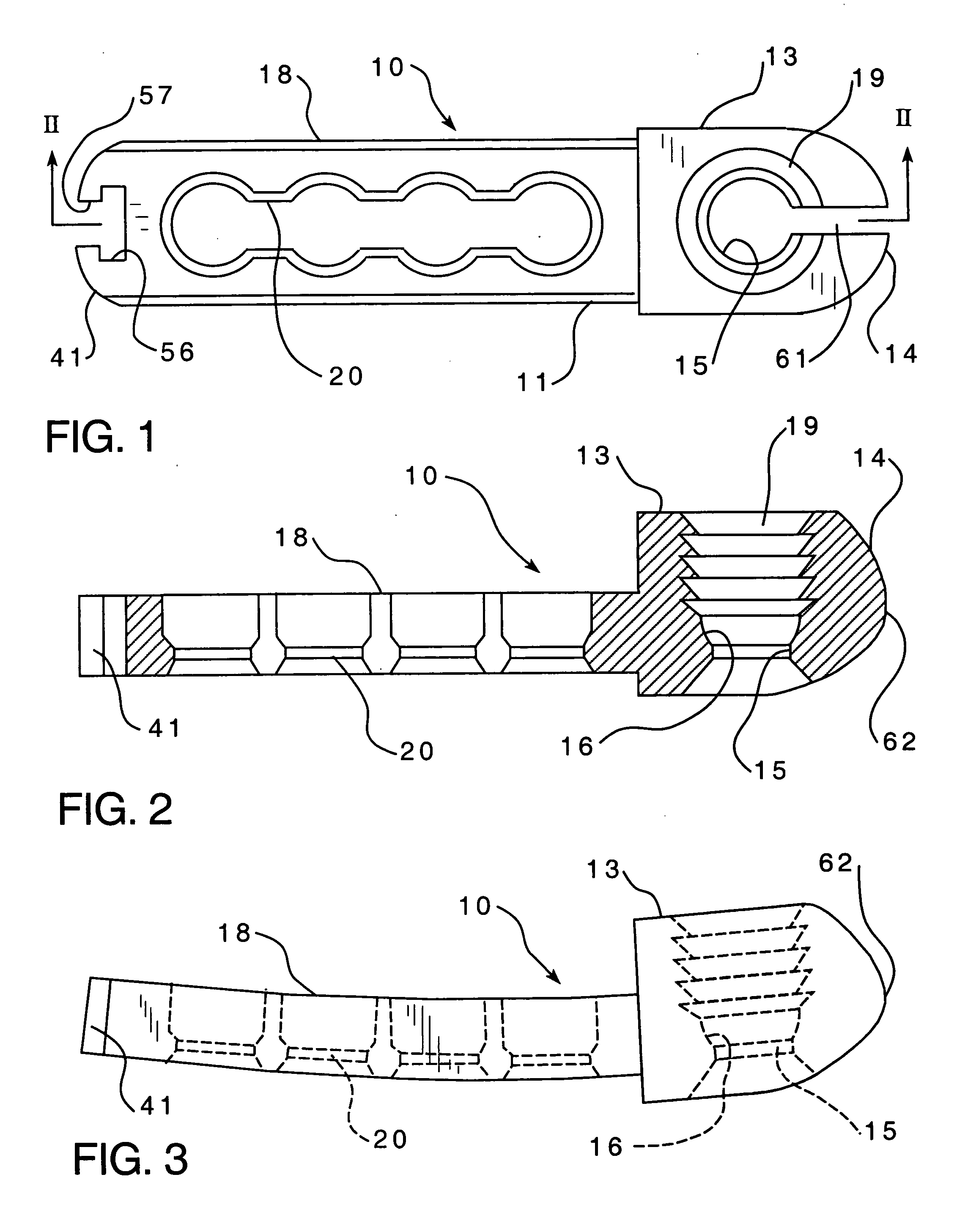Spinal stabilization implant and method of application
a technology of stabilization implant and spine, which is applied in the field of spinal stabilization implant and method of application, can solve the problems of affecting the function of the involved joint, affecting the function of the affected joint, and affecting the function of the affected joint, and achieves the effect of minimal invasiveness
- Summary
- Abstract
- Description
- Claims
- Application Information
AI Technical Summary
Benefits of technology
Problems solved by technology
Method used
Image
Examples
first embodiment
[0045] Referring next to FIGS. 12 through 16, the elongate insertion gun or tool 40 of the present invention is illustrated. This embodiment is referred to as the in line percutaneous version. The insertion tool 40 is releaseably securable to the proximal end 41 of arm 18 of plate assembly 10 whereby the tool 40 and elongate plate assembly 10 extend together end to end in their direction of elongation when secured together, as is best illustrated in FIGS. 13 and 14. Elongate insertion tool 40 is configured for manipulating plate assembly 10 as a whole and also for remotely manipulating screw receiving elements 13 and 21 for adjusting the distance between these elements. The purpose of the insertion tool 40 is to allow the surgeon a convenient tool to hold and control the spinal implant, to provide a mechanism for the minimally invasive placement of the implant, to provide a mechanism by which the spinal implant can be expanded so that it engages previously placed pedicle wires known...
second embodiment
[0073] Referring next to FIGS. 26, 27 and 28, the insertion tool is illustrated. In this embodiment the plate assembly 10 is releaseably retained at the distal end of the insertion tool 40′ for insertion through a minimally invasive access through skin and tissue of the patient by approaching the spinal column in a generally perpendicular attitude as is seen, for example, in U.S. patent application Publication No. US 2003 / 0208203.
[0074] This insertion tool 40′ of the present invention is provided with a tubular probe housing 80 with opposed anterior and posterior probe walls 81 and 82 respectively which respectively cover the distal end proximal ends 83 and 84 of plate assembly 10 when plate assembly 10 is in the reduced profile orientation illustrated in FIG. 28.
[0075] The distal end 85 of insertion tool 40′ is connected to plate assembly 10 whereby plate assembly 10 may be remotely oriented by manipulation from the insertion tool proximal end 86 from a reduced profile orientation...
PUM
 Login to View More
Login to View More Abstract
Description
Claims
Application Information
 Login to View More
Login to View More - R&D
- Intellectual Property
- Life Sciences
- Materials
- Tech Scout
- Unparalleled Data Quality
- Higher Quality Content
- 60% Fewer Hallucinations
Browse by: Latest US Patents, China's latest patents, Technical Efficacy Thesaurus, Application Domain, Technology Topic, Popular Technical Reports.
© 2025 PatSnap. All rights reserved.Legal|Privacy policy|Modern Slavery Act Transparency Statement|Sitemap|About US| Contact US: help@patsnap.com



